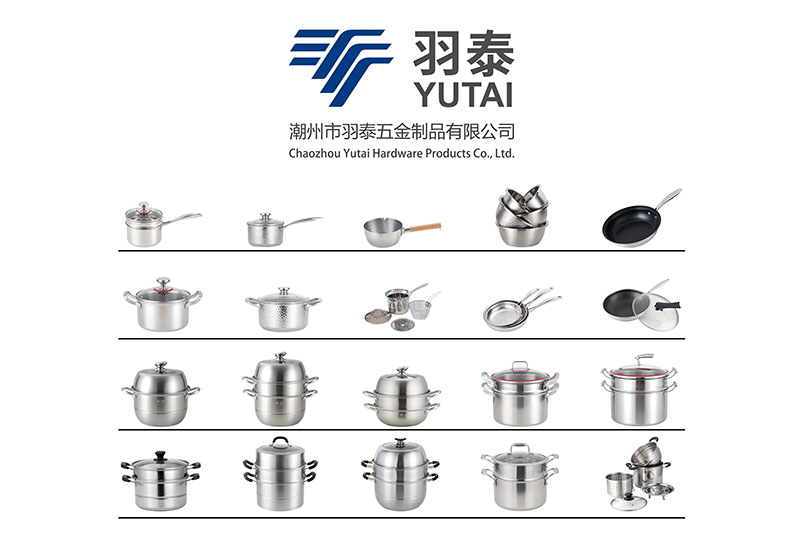Stainless steel is just a general term for a metal. and many products made of stainless steel, such as our stainless steel steamer, soup pot, cookware, frying pan.
Our pots and pans are usually made of SUS304 or SUS201, but we can also choose raw materials according to customers’ requirements.
300 Series: Chrome-Nick Austenitic Stainless Steel.
301: Good ductility for molding products. It can also be hardened by mechanical processing. Good weldability. Wear resistance and fatigue strength are better than 304 stainless steel.
302: Corrosion resistance is the same as 304 because the carbon content is relatively high and the strength is better.
303: It is easier to cut than 304 by adding a small amount of sulfur and phosphorus.
304: Universal model; ie 18/8 stainless steel. Products such as corrosion resistant containers, tableware, furniture, railings, medical equipment. The standard ingredient is 18% chromium plus 8% nickel. It is a non-magnetic stainless steel that cannot change its metallurgical structure by heat treatment.
304 L: Same characteristics as 304, but it is more resistant to corrosion and heat treatment due to the low carbon, but it is mechanically poor. It is suitable for welding and heat treatment.
304 N: Same characteristics as 304. It is a nitrogen-containing stainless steel. Nitrogen is added to increase the strength of the steel.
309: Better temperature resistance than 304, temperature resistance up to 980 °C.
309 S: It has a large amount of chromium and nickel, so it has good heat resistance and oxidation resistance. Its products are heat exchangers, boiler components and injection engines.
310: Excellent high-temperature oxidation resistance, the maximum operating temperature is 1200 °C.
316: Following 304, the second most widely used steel grade is used in the food industry, watch accessories, the pharmaceutical industry, and surgical equipment, adding molybdenum to give it a special structure that is resistant to corrosion. It is also used as “ship steel” because it has better resistance to chloride corrosion than 304. SS316 is commonly used in nuclear fuel recovery units. 18/10 grade stainless steel also generally meets this application level.
316 L: It is more resistant to corrosion and heat treatment due to low carbon. Products such as chemical processing equipment, nuclear power generators, and refrigerant storage.
321: Other properties are similar to 304 except that the addition of titanium reduces the risk of corrosion of the material weld.
347: Adding a stabilizer element, suitable for welding aircraft parts and chemical equipment.
400 series: ferritic and martensitic stainless steel, no manganese, to some extent can replace 304 stainless steel.
408: good heat resistance, weak corrosion resistance, 11% Cr, 8% Ni.
409: The cheapest model (British and American), usually used as a car exhaust pipe, is a ferritic stainless steel (chrome steel).
410: Martensite (high-strength chrome steel), good wear resistance and poor corrosion resistance.
416: The addition of sulfur improves the processing properties of the material.
420: “cutting grade” martensitic steel, similar to the earliest stainless steel of Brinell high chromium steel. Also used for surgical knives, it can be done very brightly.
430: Ferritic stainless steel, used for decoration, for example, for automotive accessories. Good formability, but poor temperature resistance and corrosion resistance.
440: High-strength cutting tool steel with slightly higher carbon content. After proper heat treatment, it can obtain higher yield strength and hardness of 58HRC, which is among the hardest stainless steel. The most common application example is the “razor blade.” There are three commonly used models: 440A, 440B, 440C, and 440F (easy processing type).
Post time: Nov-03-2022





